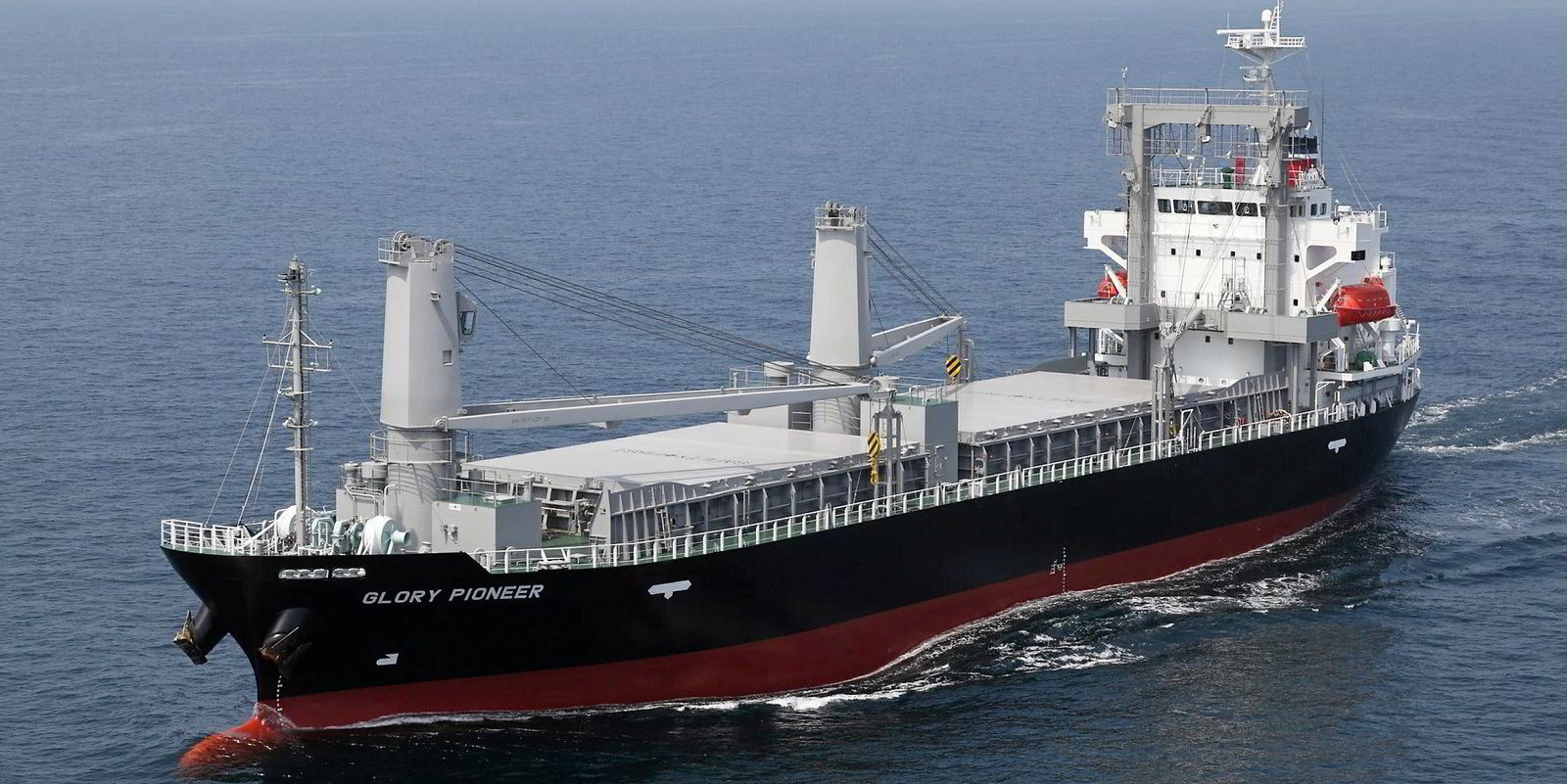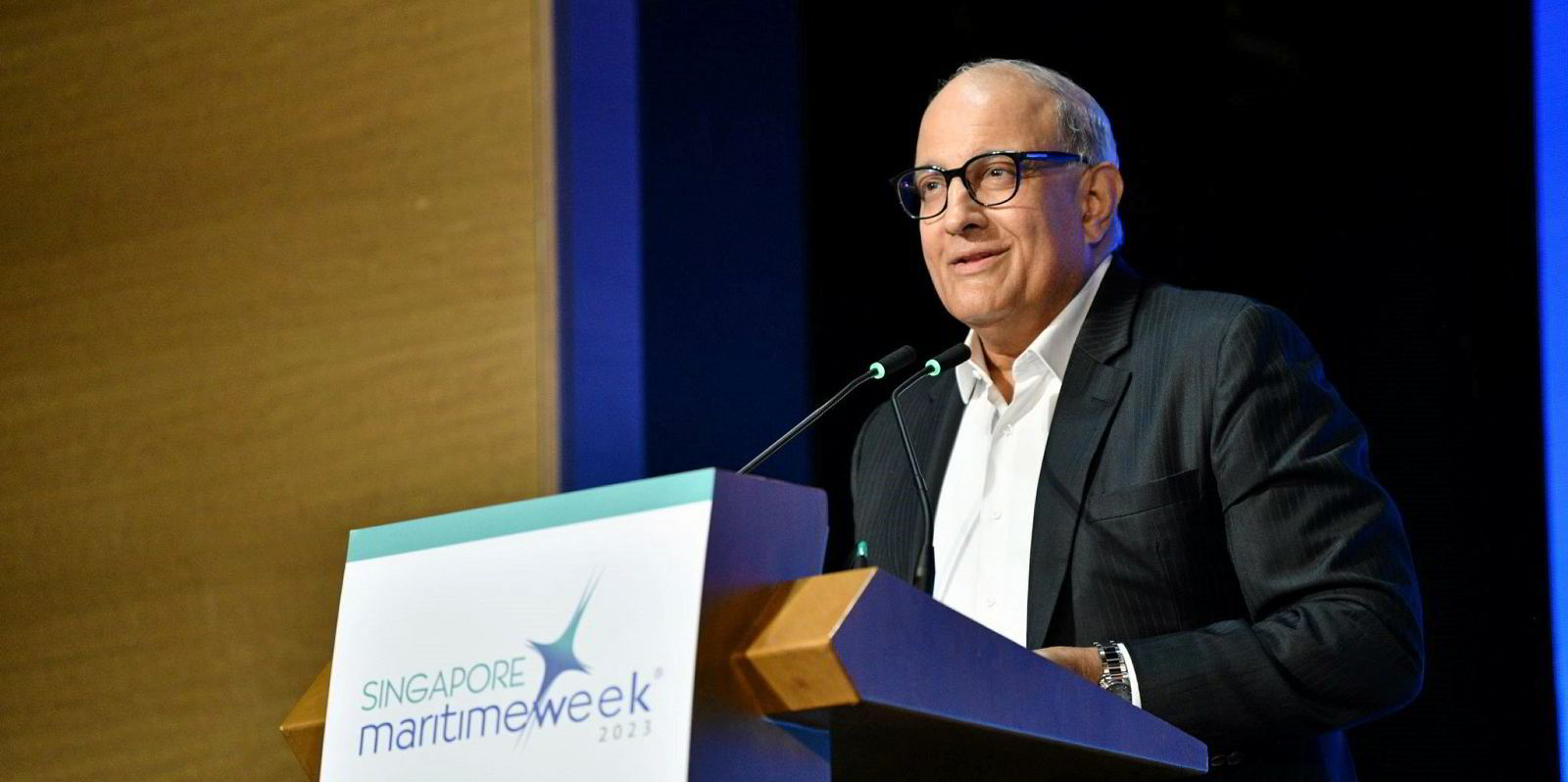Amid all the praise given at Singapore Maritime Week over sustainability solutions being developed for the shipping industry, one shipowner has raised his voice above the congratulatory chatter to highlight the lack of attention being shown towards finding solutions for smaller ships.
Eddie Huang, managing director of mini-bulker owner and operator Glory-Pacific Shipping, told TradeWinds that decarbonisation initiatives have been largely focused on big owners with larger vessels.
This, he said, leaves operators of smaller ships at risk and without solutions when faced with broad brushstroke policy changes that failed to consider the impact on smaller owners and ship types as a whole.
The 3.5-year average age of Glory-Pacific’s 10 mini-bulkers of between 8,000 dwt and 12,000 dwt is a direct result of previous broad industry policies that failed to address these, Huang claimed.
The first example he cited was the International Maritime Organization’s International Convention for the Control and Management of Ships’ Ballast Water and Sediments, which entered into force in 2017.
“The problem for us was that we simply couldn’t retrofit any existing systems into our engine rooms. It was not physically possible. We, like many other owners of small ships, were left with two choices. You either sold your fleet, or you had to go to China and find some dodgy retrofitters without any track record who could customise something for you. We took the route of just simply working our old ships until the very last minute and then selling them,” he said.
Then came the 2020 IMO sulphur cap.
Scrubbers were not an option for Glory-Pacific’s small ships.
“Scrubbers are expensive. The costs run into the millions. For a $40m ship, putting in an extra $2m is okay, but for a $10m ship, putting on an extra $2m for a scrubber not only increases your payments by 20%, it also reduces your deadweight capacity by 10%,” Huang said.
Glory-Pacific went with low-sulphur fuel instead, although this was not easy at the start.
“The lead-up to the low-sulphur transition was also something that we had quite a bit of difficulty with, primarily because the petroleum industry was not ready for it. The supply of low-sulphur fuel was there, but the bunker barges weren’t transitioned. Out of 10 barges, maybe two were equipped to supply low sulphur,” said Huang.

In fact, he argues that if it was not for the pandemic that initially caused oil prices to plummet, and a reduction in shipping activities at the beginning of 2020, the situation would have been far worse.
“The pandemic gave more time to fuel suppliers to make the transition. Without it, we would have seen low-sulphur fuel at prices of $1,200 or $1,300 per tonne. We maxed out at about $1,000 before it fell to $200.”
Huang said that in both these cases, owners of smaller vessels were faced with no option but to be price and solution-takers.
And they risk being the same in shipping’s decarbonisation journey.
“We see that the owners of bigger fleets have started making investments in methanol and all that. But as owners of smaller ships we can only sit and wait until there’s more certainty regarding availability of fuel, availability of engines and availability of support,” he said, noting that Glory-Pacific has already had discussions with shipbuilders on this topic.
“Japanese builders of smaller ships simply throw their hands in the air and say there are no engines for the smaller ship types that will allow them to run on fuels like methanol and ammonia. These are not even in development,” he explained.
Huang said he is also worried that the additional cost of dual-fuel engine plants on small ships will have a greater impact on the capital expenditure costs as compared to similar systems fitted on larger ships.
Glory-Pacific is investigating other decarbonisation alternatives. He even expressed an interest in electric power should battery efficiency and capacity get to a stage where they can propel a mini-bulker on a voyage lasting seven to eight days.
The company has time to see what mainstream developments take place. Its current fleet renewal plans call for the earliest ship renewal to happen in 2027, although it has the option to extend that to 2033. This gives it a good 10 years to figure out where and how it should go.
What Huang would like to see is for fellow owners and operators of smaller ships to combine their voices to “make a lot of noise” and raise awareness of their plight.
“I hope that in the coming transitions, especially in changes regarding decarbonisation and green fuels, smaller ship types can be given more thorough considerations as to what options we have to be part of this movement rather than be left as an afterthought until after all the big players have been sorted out,” he concluded.





